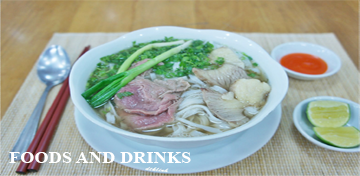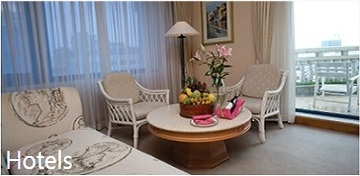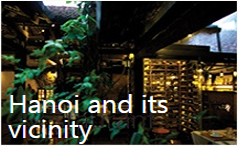Culture

Thang Long is the concentration of many temples, assembly halls and festivals. Thang Long people respect all the Gods and the heroes who were for the people and the country, and worshiped them in pagodas, temples, assemly halls... These are special features illutrating the spiritual life of the people in the Captial
Thang Long is the concentration of many temples, assembly halls and festivals. Thang Long people respect all the Gods and the heroes who were for the people and the country, and worshiped them in pagodas, temples, assemly halls... These are special features illutrating the spiritual life of the people in the Captial.
Under the domination of foreign feudal, Vietnamese people had to live in misery with no way out. Even when the country gained independence, there are still unforeseen risks in every life that can not be explained. People are inevitably pushed into superstition, hoping to get rescued by God.
In the age of Ngo, Dinh, Le and Ly Dynasty, Buddhism and Taoism were much venerated. Both Buddhism and Taoism were the teachings about ethical behavior, education about love and mutual help among people, thus, they easily won the sympathy and trust of people.
About the court, to maintain social order and making things smooth, the Kings identified clearly the need to rely on contemporary intelligentsia force. At that time, Confucianism was not yet popular thus the main force to depend on was the intelligentsia in Buddhism and Taoism, with many highly-educated people.
Ly Cong Uan was born and grew up in a pagoda, adopted by Buddhist monk Khanh Van and taught by Zen Buddhist monk Van Hanh. Then the monks actively crusaded to make him the King. It was also the monks, as contemporary intelligentsias, continued to help him a lot in internal politics and diplomatic. That's why Ly Cong Uan and other later Ly Kings were devotees, while the entire people devoted…..
Too much of devotion to Buddhism, Taoism led to the development of superstition with the construction of too many temples everywhere, wasting much people work and wealth. However, Buddhism and Taoism also brought positive factors contributing to stabilize people's mind, encouraged goodness, effectively exploited the intellectual source from monks, hermits, promoting social development in all aspects.
Till Tran Dynasty, with the wisdom of Tran kings, especially with the critique of the intellectual class who followed Confucianism, Taoism and Buddhism gradually gave up superstitions, becoming reasonable factors in the civilization of Vietnam.
Thang Long is the cultural center, the convergence of elite of the country, so right from the Ly Dynasty, when "more than half of people were monks, everywhere in the country had pagoda" (Le Van Huu), thus, Thang Long also had the most pagodas and temples scattered throughout the town.
At that time, Thang Long had large-scale pagodas with special architecture. Dien Huu pagoda was like a huge lotus flower growing in the middle of the lake, only the stone pillar was about 30-meter high. Bao Thien Tower with 12 floors and 80-meter high stood majestically on the side of Luc Thuy Lake.
Thang Long also had a lot of assembly halls. The old documents said that under Minh dynasty, in Dong Quan, there were more than 200 pagodas and 200 assembly halls. Under Mac dynasty, many assembly halls were repaired and newly built, with many famous assembly halls such as Tran Vu Assembly Hall, Huyen Thien Assembly Hall, Dong Thien Assembly Hall and De Thich Assembly Hall.
During the country's development, besides the existence of Buddhism and Taoism, our people have further promoted the long-standing tradition of the nation, with special attention to the worship of heroes who helped save the country and those who contributed largely in establishing hamlet and village, or in the creation of local crafts.
The Beliefs in Vietnam is characterized by the harmony between Buddhism, Taoism and folk beliefs. This feature was becoming more evident in Thang Long. The root cause of this harmony was the tradition that people love and help each other, the spirit of tolerance and the attitude not to prejudice others of different ideological, viewpoint of beliefs...
People were not for this religion that rejected the others, neither cared and distinguished where to worship Buddha, where to worship Fairy, where to worship God. Many temples became assembly halls such as Bich Cau Temple. Many assembly halls became pagodas, like Dong Thien Assembly Hall, Huyen Thien Assembly Hall... Many Buddhist pagodas had not only Buddha statues but Taoism ones.
Besides the Tam Bao (Three Jewels – was usually the worship of the Mother Goddesses. Tam Giao (triple religion) Pagoda in Thuong Cat (Tu Liem) has 45 statues of Buddha, God, Fairy typical of all three religions. Or Hung Ky pagoda (Minh Khai Street today), newly built in 1932, is a complex of pagoda, temple and shrine. All three are always with incense burned, which is considered normal.
Thang Long has temple to worship the mountain God (Tan Vien), river God (To Lich). Thang Long has Four Protectors, four sacred temples worshiping the gods defending the four directions East, West, South, North. The national hero Tran Hung Dao was proclaimed as the God (Duc Thanh Tran) and worshiped in many places (as on Le Duan Street, Hoe Nhai Street today).
The legendary Princess Lieu Hanh was proclaimed as the Mother Goddess and the immortal mother, one of the four immortal of Vietnam, also worshiped in many places in Thang Long and across the country, the closest famous place is Tay Ho Pagoda on the side of West Lake.
Thang Long people respect all the gods, the heroes who were for the people and the country and worship them in pagodas, temples, assembly halls. But there are also many people flocking to these places which are not only beautiful, majestic, famous but also famous for being very sacred to meet all the requests of the disciples and followers.
People flocked to Tay Ho pagoda to beg for fortune, luck and smooth in business... They swear at Quan De (Guan Gong) Temple, the famous saint for loyalty and great clarity, honesty to witness their faithfulness. Scholars and candidates go to Van Xuong temple (worshipping the Literature God) to show their respect and to beg for knowledge and passing examinations…
In the religious atmosphere in general, most rural communes, villages across the country have festivals. So is Thang Long, with many festivals in temples, pagodas and shrines, in different villages. But festivals in Thang Long, the concentration of many wealthy and well educated people than elsewhere in the country, have many special features.
Festivals in Thang Long are usually held relatively sizable, in large scale. Some are typical in the country. Giong Festival is held in many places (all locate in Hanoi today) like Phu Dong, Xuan Dinh, Soc Son, Chi Nam, Thanh Nhan.
Particularly, Giong Festival in Phu Dong (Gia Lam) is the biggest, also can be considered the most solemn and elaborate among traditional festivals of Vietnam. To review the legend of Thanh Giong fighting against An invaders, the villagers were mobilized to perform the battle with hundreds of people directly involved in and other hundreds served on site. In addition, thousands of people come to attend the event.
Hai Ba Trung Temple Festival is held in many places, concentrating in Ha Loi temple (Me Linh, Vinh Phuc) and Hat Mon temple (Phuc Tho district). Dong Nhan temple festival (Hai Ba Trung District), even the temple is not built on the historic sites attaching directly to the career of Hai Ba, is also held very solemn. Especially, due to the location in the middle of the city, the former feudal state considered Dong Nhan festival the festival of the whole nation (national festival) and assigned officer to lead the festival.
Festivals in Thang Long are usually held with special and profound content and meaning, and most festivals are held by retelling or performing old stories to remember about heroes and martyrs who made great contributions to building up and protecting the country, recreating the glorious victories of the nation, the heroic spirit of our army and people to defeat invaders.
Dong Co temple festival began when the Ly regime processed the God of the bronze drum from Dan Ne (Thanh Hoa province) to Thang Long and built temple, had left an indelible imprint in the imagination of the later about the solemn, heroic scene. During the ceremony, all the officers standing before God altar and in front of numerous people attending to solemnly read the swear to be loyal.
The Gratefulness and worship of national heroes have become a tradition of the people of Vietnam as well as of Thang Long - Hanoi. Even in the Nguyen Dynasty, it was not allowed to mention the merits of the Tay Son, people still organized anniversary of Dong Da fight. Until recent decades, in Spring time, Hanoi people recalled a Thang Long in the Spring of 1789, Thang Long had joined forces with Tay Son army and people all over the country to win the great and glorious victory in the history of the nation to fight against foreign invaders.
Today, annually, Hanoi on behalf of the nation celebrates the anniversary of Ngoc Hoi - Dong Da victory, commemorating the national hero Quang Trung with solemn sincere respect. During the festival, many folk games, especially dragon dancer, creating the scene of people in 9 wards around Dong Da burning straw soaked with oil forming a fire dragon enclosing enemy post.
About the format, traditional folk festivals are still village festivals, but Thang Long festivals have their own features of a busy, luxurious capital.
Thang Long has Lang festival with the special story of exploding firecrackers in the God fight. Dong Nhan temple festival with the solemn ritual of bathing statues with water from Red River, with the candle dance and incense offering ceremony by the women team. There buffalo sacrifice ritual at Dong Ha gate (Hang Chieu Street today), flag festival in Dong Ba (Thuong Cat, Tu Liem); hat phet (hitting the ball) folk game in Dong Do (Dong Anh district), ball robbery in Thuy Linh (Thanh Tri district), martial fighting in Dong Du (Gia Lam district) and many other games in the village festivals: rice cooking contest, weaving contest, sailing competition ... showing the richness and unique form of Thang Long festivals.
Professor Vu Khieu (Thang Long – Hanoi thousand years of civilization)




